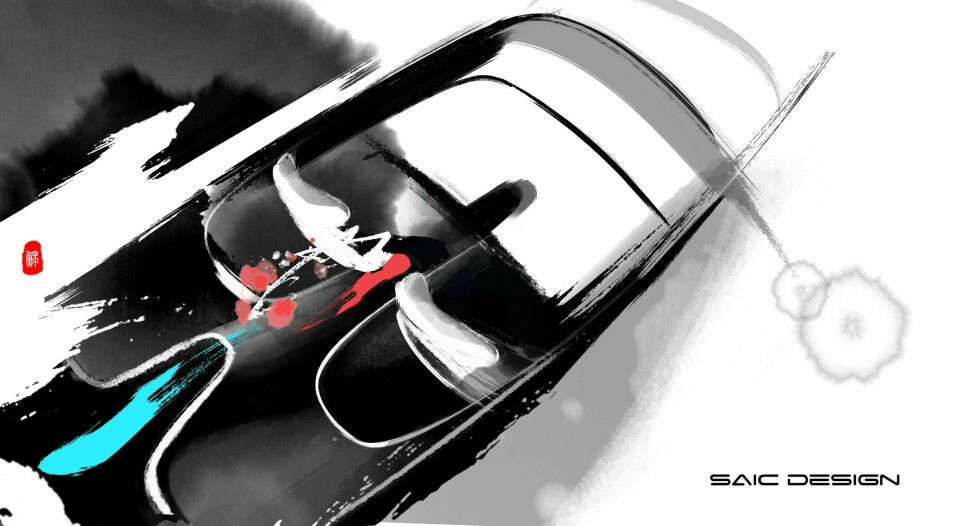
SAIC Kun Concept fuses traditional Chinese art with futuristic technology
Linking the old with the new, SAIC has managed to install its Kun concept with a sense of warmth
First presented at 2020 Dubai Expo, the SAIC Kun Concept is the result of a collaboration between the advanced design teams in Shanghai and London, led by Shao Jingfeng. The idea behind the car is to leverage ideas from traditional Chinese art while also including forward-thinking technologies.
Core to the concept is Kun-Peng mythology – taken from a parable written by philosopher Zhuangzi, which includes the description of a giant fish transforming into a bird. The Concept is depicted in various mobility scenarios, from flying to underwater shuttling.
It has a dramatic profile, with the front sitting close to the ground like a streamlined sports car, while the rear is chunky and wide like a large SUV. The concept almost appears to be reminiscent of iconic wedge-shaped designs from the side, but for the sweeping roofline.
Central to the exterior design is the “waterflow” lighting signature. Thin lines of LEDs, white on the front of the car and red on the back, run around the “digital faces” – the large boomerang-shaped areas that use sensors to adapt vehicle settings to weather and road conditions. When animated, the lights make the exterior come alive, with a movement designed to replicate flowing rivers. This theme is also present on the inside of the car.
A large solar panel is placed on top of the hood and beneath the windscreen to top up power with clean energy. Another key part of the exterior design is the paint. A gray primer with fluorescent green pearl particles and a transparent varnish gives the concept a porcelain-like texture, hinting back to traditional Chinese design. Weishan Wu, a calligrapher and sculptor, has written the word ‘Kun’ in Chinese characters on both the front and back of the car.
Thinking further ahead, the car is depicted as having Level 4 autonomous driving capability. To ensure safety for other users, blue lights illuminate around the whole car, signaling that autonomous driving mode is engaged. And as for the flying aspect, this is enabled by the gull-wing doors which extend outwards to become wings.
The spacious interior of the Kun concept is full of features that point to Chinese design and values. At its heart is the large red vase, created by Jingdezhen ceramic artist Ning Gang, with its traditional colour and floral pattern. The upper IP is adorned with wooden slats that wrap around from A-pillar to A-pillar, and below sits a near-flat shelf cladded in Dinamica microfibre, embroidered with images of rivers and rolling mountains. These are illustrations of the landscape south of the Yangtze River, inspired by the ‘Thousands of Miles of Rivers and Mountains’ painting by Wang Ximeng.
The theme of flowing water continues along the lower door panels, the seats, and the centre of the headliner, with thin sweeping lines creating a sense of motion throughout the cabin. This culminates in a delicate feature installed at the back of the cabin beneath the rear window which emits a soft vapour to imitate a smoky river.
A large, razor-thin transparent screen is hidden away in the IP. It automatically rises when passengers get into the car, and displays information on road conditions as well as navigation. There is also a hologram located in the centre armrest that can display more information and can be linked to the large screen. Sensors hidden around the cabin capture gestures from passengers to allow them to interact with the screens and the vehicle.
By drawing on traditional art and Chinese values, the Kun Concept can include futuristic technologies without feeling cold and clinical. There is an undeniable warmth to the ideas; a warmth that will be integral for production models to come.





















































